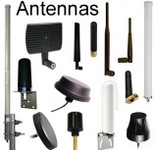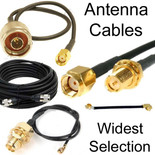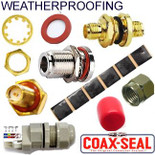Antennas, Antenna Cables, Wireless Products: Technical Articles
Torque Ratings of SMA and RP-SMA Antenna Cable Connectors & Adapters

When it comes to ensuring a reliable RF (Radio Frequency) connection, the devil is in the details. Whether you're connecting an SMA cable to a piece of equipment, attaching an SMA antenna to your device, or integrating an SMA adapter into your setup, one vital aspect not to overlook is the torque rating of the antenna connectors. This article sheds light on the torque specifications for both SMA and RP-SMA cable connectors and the importance of adhering to them.
Torque Ratings for SMA Connectors
For SMA connectors:
- Standard SMA cable or antenna connectors : Typically, the recommended mating torque for brass connectors is around 3-5 in-lbs (inch-pounds) and for stainless steel connectors, it's 7-10 in-lbs.
- SMA adapters: These might have slightly different torque recommendations based on their design, but generally, they fall within the 3-10 in-lbs range as well.
Torque Ratings for RP-SMA Connectors
For RP-SMA connectors :
- Standard RP-SMA cable or antenna connectors : The torque specifications are similar to SMA connectors. Brass RP-SMA connectors typically require a torque of 3-5 in-lbs, while stainless steel versions call for 7-10 in-lbs.
- RP-SMA adapters: Again, specifics can vary, but as a general rule of thumb, torque values between 3-10 in-lbs are considered standard.
Adhering to the Specifications
For the best performance and longevity of your connectors :
- Use a torque wrench: This ensures that the correct amount of force is applied when connecting.
- Check manufacturer guidelines: Sometimes, specific components or brands might have unique torque requirements. Always refer to the provided documentation.
- Regular inspection: Periodically inspect connectors for wear or damage, especially if they are frequently mated and unmated.
Why Torque Ratings Matter
The torque rating of an SMA connector refers to the maximum amount of force or torque that can be applied to the connectors during installation without damaging it.Torque is the force applied to turn an object about an axis. In the context of connectors, torque ensures a proper connection between the male and female interfaces. Too little torque, and the connection might be loose, leading to poor performance or even signal loss. Excess torque, on the other hand, can damage the connector's threads or the central pin, rendering the connection faulty and, in worst-case scenarios.
Exceeding the recommended torque rating during installation can lead to various issues necessitating equipment replacement, including:
- Connector Damage: Applying too much torque can strip the threads or deform the connector, making it unusable.
- Signal Degradation: Over-tightening can cause impedance mismatches, leading to signal loss or reflections that can degrade the performance of your wireless system.
- Poor Connection: Under-tightening may result in a poor connection, leading to intermittent signal loss or reduced data throughput.
About SMA and RP-SMA connectors
SMA (SubMiniature version A) connectors are coaxial RF connectors developed in the 1960s. Due to their high performance and reliability, they are widely used in a variety of applications, from telecommunications to satellite communication.
RP-SMA stands for Reverse Polarity SMA. While the male and female definitions for the connectors remain consistent (i.e., male connectors have threads on the inside, female connectors have threads on the outside), the central pin's genders are reversed in RP-SMA when compared to SMA. This configuration was designed primarily to satisfy specific regulatory requirements.
Conclusion
Whether you're working with an SMA extension cable, SMA antenna, or SMA adapter, understanding and respecting the torque ratings of SMA and RP-SMA connectors is crucial. By doing so, you safeguard your equipment, ensure optimum performance, and extend the lifespan of your connections.
:







